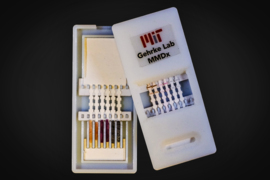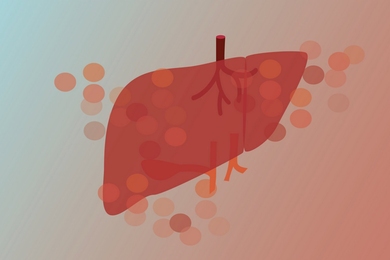Research on the logistics of responding to Ebola outbreaks has revealed that an often-overlooked, but critical, factor in resource deployment to treat victims of the disease is how many of the people in treatment centers are Ebola-negative.
Individuals who test negative take up bed space and treatment capacity needed for those who have contracted the disease. More accurate forecasts of Ebola-negative cases, coupled with streamlined testing procedures to reduce their stay, increases the efficiency of treatment facilities and makes response programs more effective.
Now, student research out of the MIT Center for Transportation and Logistics (CTL) has produced a methodology for achieving these improvements. The work was led by Robert C. Rains III, a 2019 graduate of MIT’s supply chain management blended master’s degree program (SCMb), who is a program manager with PAE in East Africa. The findings are not only important for combatting Ebola; the methodology can also be used to develop more effective responses to other endemic diseases.
Resource planning
There has been extensive research on the dynamics of Ebola disease transmission and the interventions needed to combat outbreaks of Ebola. However, comparatively little scholarship is available on the operational and logistics management elements of response programs.
The new CTL research helps fill this gap. The study also develops a more comprehensive model for forecasting the required space and materials and staffing to prevent service failures during a response to an outbreak of Ebola.
The model is based on a nominal Ebola outbreak using parameters from previous responses. For example, patient length of stay for Ebola-positive patients is based on historical values from the Sierra Leone response during the 2014-15 West Africa outbreak. In that response, survivors stayed in treatment centers for 15.3 days on average, while fatal cases stayed for an average of 4.6 days. In conducting sensitivity analysis for the model, the CTL study analyzes 16 scenarios with varying parameters. The catchment areas selected for comparison range between 100,000 and 1.2 million inhabitants to reflect remote rural settings as well as large urban centers.
Comprehensive forecasting
Central to such response programs is isolating and treating suspected and confirmed Ebola patients. Responders must provide enough beds, materials, and readily available clinical care to prevent service failures in these key areas. However, predicting resource requirements to meet the needs of patients in a particular outbreak is challenging.
External factors such as the size of both the at-risk population and the outbreak, and the prevalence of endemic diseases in the catchment area, influence how many individuals are isolated. Factors specific to individual treatment centers, including the efficacy of epidemiological capabilities, diagnostic turnaround time, and fatality rates, affect the flow of admissions and how long patients stay in facilities.
These factors make each Ebola response unique. This uniqueness, combined with the highly variable nature of outbreaks, renders the historical data commonly used to forecast demand on resources much less valuable. Alternative forecasting methods are needed to account for the variability of outbreaks and be less reliant on past numbers.
"Efforts to improve Ebola forecasting typically focus on predicting the infected population," says Jarrod Goentzel, director of the MIT Humanitarian Supply Chain Lab and Rains' graduate advisor. "But our research found the primary driver of operational capacity and service requirements is individuals who test negatively for the disease — not patients who are infected."
Ebola-negative cases isolated from the endemic disease population typically represent the majority of patients over the response period. In the scenarios analyzed, Ebola-negative patients consumed 57-88 percent of the service capacity. Moreover, the size of the Ebola-free group increases proportionally with the catchment area population and has greater potential to overwhelm resources, especially in urban outbreaks.
"Future forecasting research must be more comprehensive to incorporate this population," says Rains.
Diagnostic improvement
In addition to better forecasting, the researchers say Ebola outbreak responses would benefit from improved operational management, particularly in the time required for diagnostic testing.
Streamlined testing for the disease has a significant impact on the efficiency of treatment centers. Increasing the speed of lab results — i.e., reducing the time from sample collection to diagnostic result — decreases patient length-of-stay for Ebola-negative individuals. Treatment centers with no onsite diagnostic capability must transport samples and wait for results, taking up to three days. Centers with diagnostic operations produce a result in 12 hours.
In the rural scenario with low catchment area population, such improvement reduces bed capacity by 50 percent. In the urban setting with 1.2 million inhabitants, the treatment center size is reduced by 82 percent simply by speeding up diagnostic velocity.
Increasing demand
Additional research is needed to make this preliminary model more robust, and to incorporate a broader range of outbreak scenarios and settings into the methodology. Such refinements would provide more robust planning options for responders.
However, this exploratory research underlines the need for improved forecasting of the Ebola-negative population and streamlined diagnostic operations, particularly for outbreaks in densely populated regions.
Says Rains, "It'll be critical to improve the performance of response efforts at a time when urbanization and the increasing mobility and interconnectivity of populations are creating more favorable conditions for large-scale outbreaks of Ebola and other high-risk diseases."









